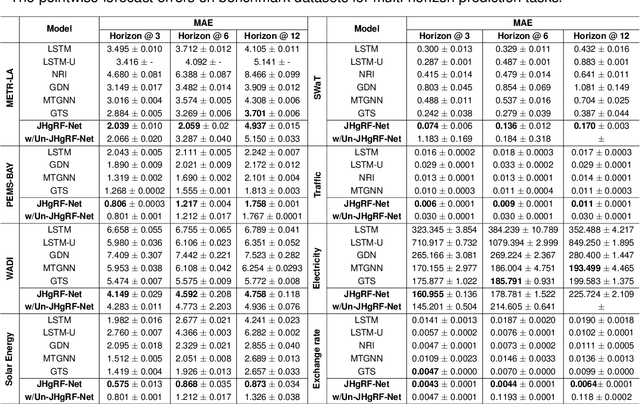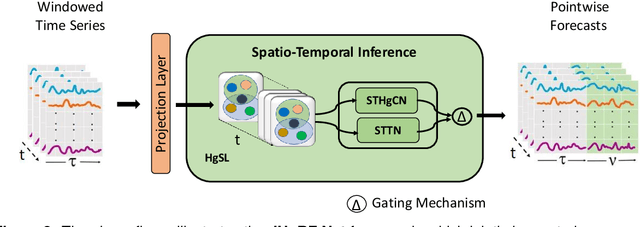Joint Hypergraph Rewiring and Memory-Augmented Forecasting Techniques in Digital Twin Technology
Paper and Code
Aug 22, 2024



Digital Twin technology creates virtual replicas of physical objects, processes, or systems by replicating their properties, data, and behaviors. This advanced technology offers a range of intelligent functionalities, such as modeling, simulation, and data-driven decision-making, that facilitate design optimization, performance estimation, and monitoring operations. Forecasting plays a pivotal role in Digital Twin technology, as it enables the prediction of future outcomes, supports informed decision-making, minimizes risks, driving improvements in efficiency, productivity, and cost reduction. Recently, Digital Twin technology has leveraged Graph forecasting techniques in large-scale complex sensor networks to enable accurate forecasting and simulation of diverse scenarios, fostering proactive and data-driven decision making. However, existing Graph forecasting techniques lack scalability for many real-world applications. They have limited ability to adapt to non-stationary environments, retain past knowledge, lack a mechanism to capture the higher order spatio-temporal dynamics, and estimate uncertainty in model predictions. To surmount the challenges, we introduce a hybrid architecture that enhances the hypergraph representation learning backbone by incorporating fast adaptation to new patterns and memory-based retrieval of past knowledge. This balance aims to improve the slowly-learned backbone and achieve better performance in adapting to recent changes. In addition, it models the time-varying uncertainty of multi-horizon forecasts, providing estimates of prediction uncertainty. Our forecasting architecture has been validated through ablation studies and has demonstrated promising results across multiple benchmark datasets, surpassing state-ofthe-art forecasting methods by a significant margin.
 Add to Chrome
Add to Chrome Add to Firefox
Add to Firefox Add to Edge
Add to Edge